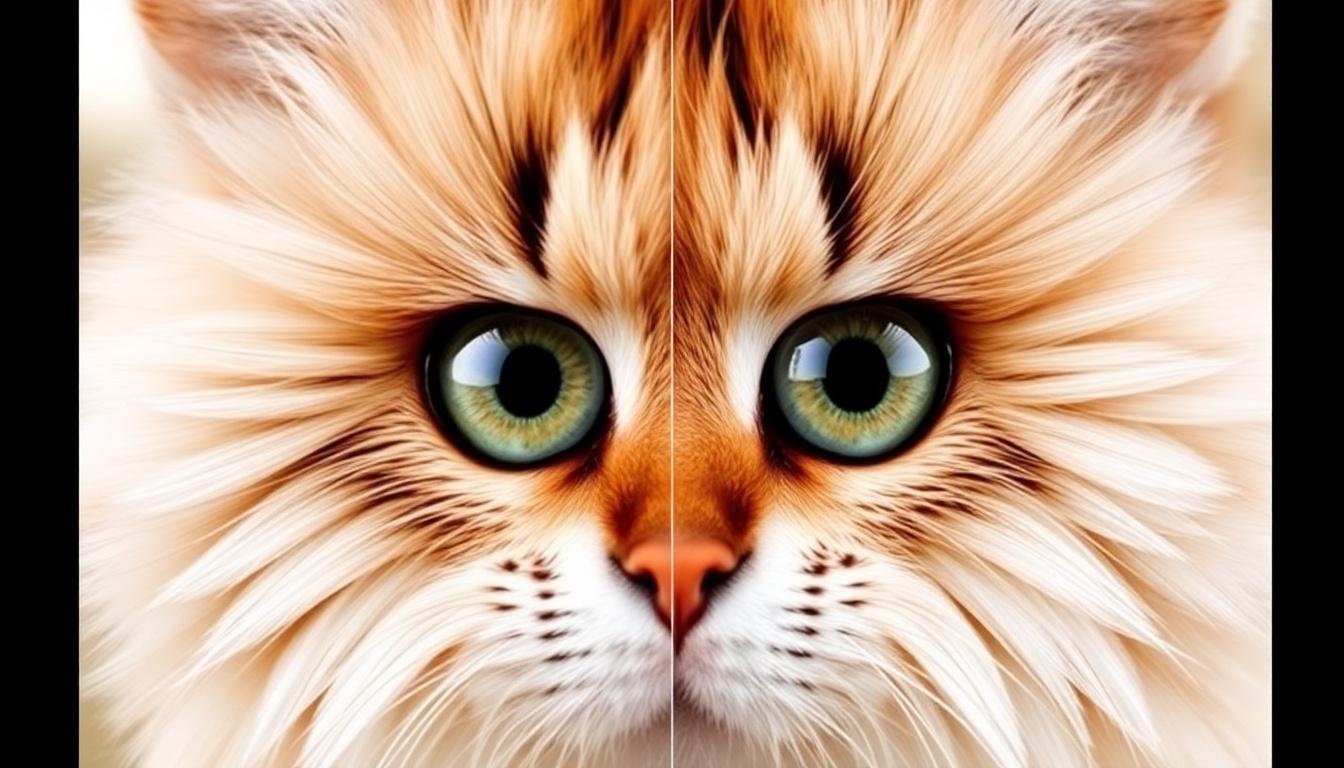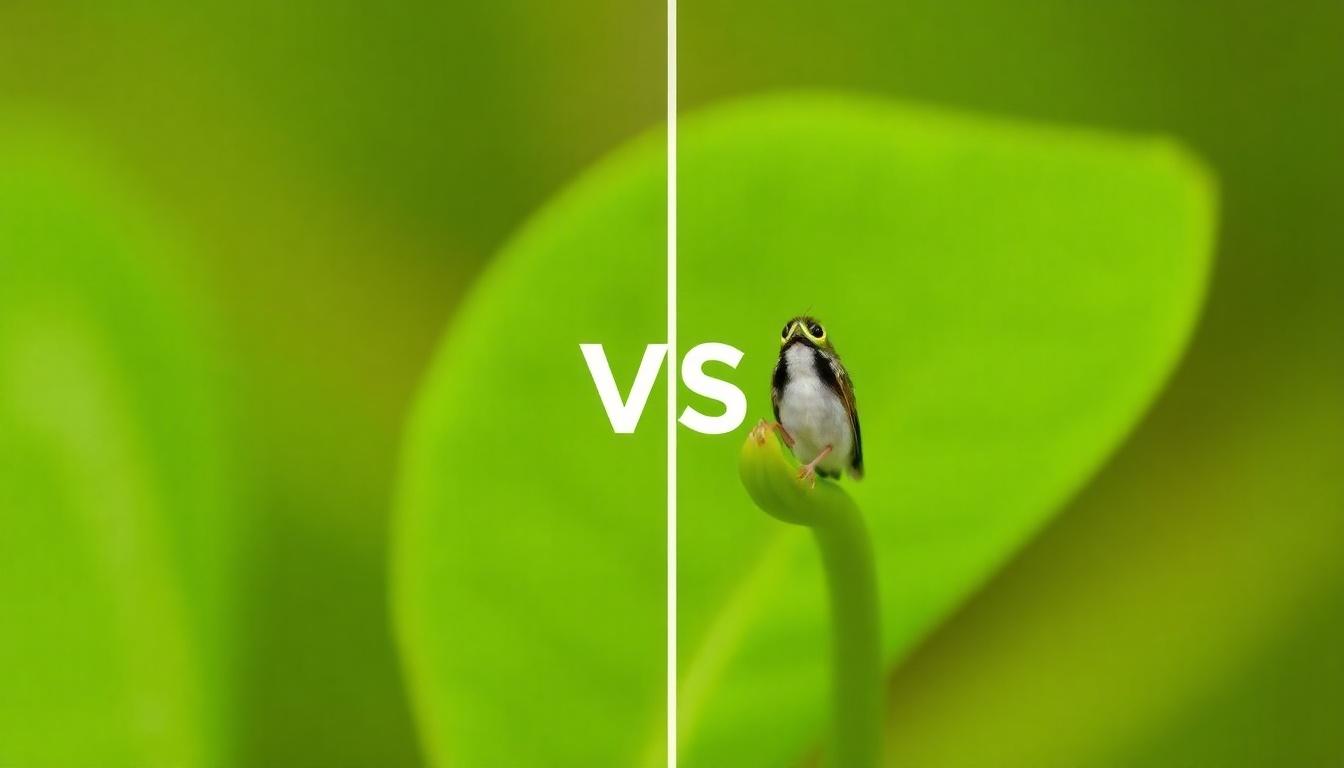TABLE OF CONTENTS
- Home
- content hub
- Understanding Image Resolution: DPI in Print Vs. Web (Part 1)
Understanding Image Resolution: DPI in Print Vs. Web (Part 1)
Emma Davis
Content Writer
Jan 9, 20144757 views
Jan 9, 20144757 views
TABLE OF CONTENTS
Ever wondered why some images look crisp and clear while others appear blurry or pixelated? It all comes down to image resolution, a term we’ve all heard but might not fully understand. Whether we’re editing photos, designing graphics, or simply sharing pictures online, resolution plays a key role in how our images are perceived.
Understanding image resolution isn’t just for photographers or designers—it’s for anyone who wants their visuals to stand out. In this article, we’ll break down the basics of resolution, how it impacts image quality, and what you need to know to make your images shine. Let’s dive into the details and take the guesswork out of creating stunning visuals.
What Is Image Resolution?
Image resolution refers to the amount of detail an image holds, measured in pixels. Higher resolution images contain more pixels, leading to sharper visuals, while lower resolution images have fewer pixels, resulting in reduced clarity. Resolution plays a crucial role in both digital and print design, where higher resolutions ensure crisp, professional-quality outputs.
Pixels per inch (PPI) quantify image resolution, especially for digital screens. For print, resolution is often measured in dots per inch (DPI), which determines the level of detail printers can reproduce. For example, 300 DPI is a standard for high-quality prints, ensuring sharp and precise details.
When creating custom packaging or promotional materials, maintaining the correct resolution ensures brands achieve professional and striking results. At 4OVER4.COM, we empower businesses to make an impact by providing custom printing solutions tailored to high-resolution designs. Check out our free samples to experience premium-quality prints that meet professional standards.
Selecting the right resolution early prevents issues like pixelation or grainy prints. Design tools, such as the best online designer, simplify this process by offering features to handle high-resolution requirements efficiently.
Professionals typically use 72 PPI for web visuals, allowing faster loading times without compromising clarity. Meanwhile, higher resolutions exceeding 300 DPI are crucial for flawless print materials like business cards, posters, and brochures. To learn more about these print outputs, explore our catalog of services.

The Importance Of Image Resolution
Image resolution directly influences the visual impact and quality of printed and digital materials. It affects sharpness, detail, and overall presentation, which are critical to elevating a brand's professional image.
Impact On Print Quality
Image resolution plays a significant role in print quality. High-resolution images (300 DPI and above) ensure crisp, sharp results without pixelation. Materials like business cards, brochures, and custom packaging demand precise details to create a strong impression. Poor resolution in these cases can lead to blurry or grainy prints, diminishing the professional look of your brand.
At 4OVER4.COM, we provide custom printing solutions designed to meet high-resolution standards. Our services empower businesses to create visually appealing materials for effective brand communication. Whether it's promotional flyers or large-scale banners, correct resolution settings demonstrate professionalism and attention to detail.
Effect On Digital Displays
Resolution affects how images appear on digital screens. For web use, 72 PPI delivers faster load times while maintaining visual clarity for online platforms. However, digital presentations, virtual ads, and high-definition displays benefit from resolutions tailored to higher pixel densities to avoid pixelation and improve user engagement.
Using tools like our free online designer simplifies creating high-resolution digital assets. Starting with the right resolution supports seamless integration between print and digital campaigns, ensuring consistent branding across all mediums.
For high-resolution samples crafted specifically for your projects, explore free options through 4OVER4.COM to visualize your branding success before production. Evident in every print or digital asset is the enhanced quality that strengthens your message and drives recognition.
Key Terms Related To Image Resolution
Understanding key terms related to image resolution ensures better clarity when creating or optimizing visuals. These terms impact the quality and purpose of our printed and digital materials.
Pixels And Pixel Density
Pixels are the smallest elements of a digital image, collectively forming the complete visual. Higher pixel counts result in sharper and more detailed images. Pixel density, often measured in pixels per inch (PPI), impacts how detailed an image appears on screens. For instance, a visual designed for digital use benefits from 72 PPI for quick loading, while print designs require higher densities.
At 4OVER4.COM, our custom printing services accommodate various pixel density needs by ensuring high standards for visuals intended for business cards, brochures, or packaging. Explore these custom printing solutions to elevate your brand's quality.
DPI And PPI Explained
DPI (dots per inch) is specific to print resolution, determining how many ink dots a printer places per inch on paper. PPI refers to on-screen pixel density. While 300 DPI is standard for quality print outputs, adjusting PPI ensures optimized clarity for digital visuals.
Utilizing 4OVER4.COM's tools enables designers to maintain ideal DPI and PPI values. With resources like a free online designer, creating high-resolution designs becomes simple. Additionally, free samples help ensure accuracy before production, fostering professional visual results.
Types Of Image Resolution
Understanding image resolution differences is essential for achieving visual materials that align with specific needs. Resolutions directly impact clarity and usability across digital and printed platforms.
High Resolution Vs. Low Resolution
High-resolution images contain more detail and maintain their quality when enlarged. They’re ideal for print materials, such as business cards, brochures, and custom packaging, requiring sharp and professional output. For instance, 300 DPI is a standard for high-quality print work, ensuring no pixelation in the final product. Our custom printing solutions at 4OVER4.COM ensure high-resolution prints that elevate your brand image effectively.
Low-resolution images typically have fewer pixels, leading to blurry visuals, especially when enlarged. Their common usage includes web-based content like thumbnails and email attachments where speed and smaller file sizes matter more than detail. However, using low resolutions for print results in diminished visual quality, impacting brand presentation.
Explore Free High-Resolution Samples to understand how high-quality images can enhance your marketing materials.
Standard Resolution Categories
Image resolution is categorized based on purpose and output type. These categories simplify the selection for projects requiring tailored clarity and quality.
- Screen Resolution: Digital screens generally display images at 72 PPI, suitable for web visuals. For enhanced digital campaigns, our Free Online Designer ensures optimized formats, helping create assets quickly.
- Print Resolution: Print resolutions, typically set at 300 DPI, deliver clear images with sharp details. 4OVER4.COM provides expert printing services, helping businesses produce high-resolution business cards and brochures designed to perfection. Use our Custom Printing Services for impactful marketing materials.
- HD and Beyond: High-definition images like 4K ensure maximum detail and richness, especially in commercial advertising or visual presentations. They work best in video thumbnails, high-quality prints, and promotional banners.
Accurate selection between these categories ensures visuals meet their intended impact, whether for online engagement or physical branding.
Factors Affecting Image Resolution
Understanding the factors influencing image resolution is essential for creating high-quality visuals. These elements impact the clarity, detail, and overall appearance of both digital and printed materials.
Sensor Size In Cameras
Larger camera sensors capture more detail, resulting in higher resolution images. They allow better light intake, enhancing image quality in low-light conditions. For example, a full-frame sensor produces sharper, more detailed visuals compared to smaller sensors like APS-C or micro four-thirds.
Custom printing, such as that offered by 4OVER4.COM, relies on high-resolution images for optimal results. Whether preparing marketing materials or custom packaging, using high-resolution files ensures professional-grade prints that elevate brand presence. Explore tools like this free online designer to simplify the creation of high-quality visuals.
Compression And File Formats
Image compression reduces file size but can impact resolution. Lossy formats like JPEG compromise detail to save space, while lossless formats like PNG or TIFF preserve resolution but result in larger files. For printed materials, using uncompressed or minimally compressed formats is key to maintaining clarity.
4OVER4.COM’s custom printing services accommodate various file formats, ensuring images meet high-resolution standards for outputs like brochures, business cards, and banners. Businesses can request free samples to evaluate print quality before production. This ensures perfect representation of brand visuals with every printed asset.
For digital use, select file formats carefully to maintain resolution without affecting web performance. Printing resources like these custom services help guarantee that resolution is preserved when transitioning from digital to physical mediums.

Tips For Enhancing Image Resolution
Enhancing image resolution is essential to achieve professional-quality visuals. Using the right tools and techniques ensures clarity and detail in both digital and print designs.
Using Editing Software
Editing software helps refine and enhance resolution for various visual applications. Advanced photo editors like Adobe Photoshop or free online tools allow users to upscale images with improved clarity. Resizing features, sharpening tools, and AI-based enhancement options can correct resolution-related issues. For simpler design needs, we recommend using the best online designer for its user-friendly interface and reliable functionality.
4OVER4.COM supports high-resolution designs, ensuring professional-grade results in prints like brochures, business cards, and packaging. Incorporating tools from editing software into your workflow guarantees that visuals meet industry standards.
Choosing The Right Equipment
Equipment with higher specifications ensures better initial resolution, minimizing the need for post-processing adjustments. Cameras with larger sensors and advanced settings capture more detail, resulting in higher resolution images. Choosing monitors and printers that support high pixel density levels also plays a critical role in maintaining resolution standards.
For businesses focusing on professional branding, collaborating with 4OVER4.COM ensures materials like posters or promotional items reflect exceptional quality. Their custom printing services utilize cutting-edge technology to maintain resolution integrity across all formats.
Enhancing resolution strengthens image quality, especially for physical designs. Ordering free samples from 4OVER4.COM before large-scale production ensures clarity and detail align with business goals.
Conclusion
Understanding image resolution is key to creating visuals that stand out and deliver your message effectively. Whether you're designing for digital screens or print, selecting the right resolution ensures clarity, sharpness, and professionalism in every project.
By using the proper tools, formats, and techniques, we can enhance resolution and elevate the quality of our visuals. Partnering with reliable services like 4OVER4.COM further simplifies the process, helping us achieve results that align with our branding goals. High-quality visuals aren't just about aesthetics—they're a powerful way to strengthen our brand and leave a lasting impression.
More from Printing Tips
9495
In the world of networking, a business card serves as more than just a piece of paper; it’s a vital tool for making lasting connections.
Matthew Prince
Dec 28, 2023
7804
New digital features have been introduced to business cards, making business connections more effective than they used to be. Technology has r
Matthew Prince
Dec 20, 2023
17085
First impression matters, especially when marketing your small business. An effective business card design will help you impress potential pro
Matthew Prince
Dec 14, 2023
2780
Creative branding is critical for many businesses. After all, there’s nothing worse than just blending into the market. But brands can stand
Matthew Prince
Dec 6, 2023
2928
Low-quality business cards will cost you money. One report published that
Matthew Prince
Nov 28, 2023
12620
You can sell more goods or services with business card designs that start conversations. In contrast, clients forget bland card designs as soo
Matthew Prince
Nov 22, 2023
2691
In today’s interconnected world, the importance of a well-crafted international business card can't be overstated. As we navigate di
Matthew Prince
Nov 1, 2023
3143
Business cards are not as we know them anymore. For example, interactive business cards now combine the physical nature of traditional cards w
Matthew Prince
Oct 4, 2023